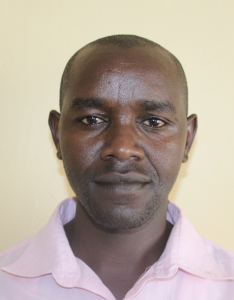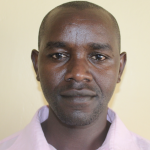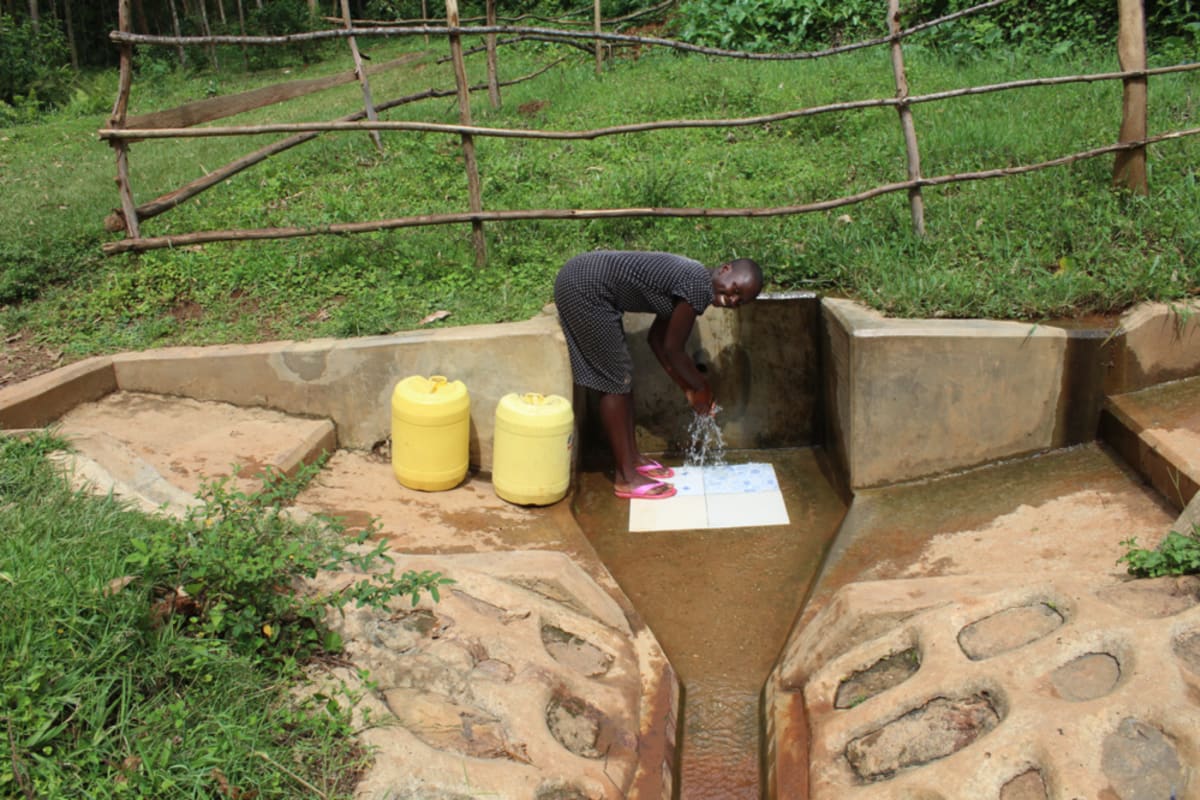"Most people try every means to treat the water from the spring, but many cannot access the chemicals," said Mr. Evans Misigo.
"Hence, they end up drinking the water as raw as it is from the source, which has made so many of us sick. This paralyzes the workforce needed and also makes the pupils miss school because of illness."
"Sometimes, children come to this spring and starts playing, making the water very dirty. This causes a lot of delays and crowding at the water source as people wait for the water to settle before fetching water," Mrs. Nelly Muyonga added.
"With the state that our spring is in, we always say it is only by the grace of God that we are still breathing and moving around because anything can happen to us especially when our water is tampered with either by natural or deliberate contamination."
The 250 people living in this part of Wajumba rely on Wajumba Spring. The water at this spring is unprotected and fully open to contamination. Since the water has pooled at ground level, people just dip their containers under the water until full. The water is unsafe for human consumption, and money is wasted to treat preventable illnesses.
A normal day in Wajumba starts very early in the morning at 5am when people wake up to eat breakfast. They carry their jembes and hoes to work on their farms from morning until evening.
Large families live together at their household compounds, sharing whatever they have with each other. In most cases, extended families live in a separate mud home from the nuclear families just a stone’s throw away. There is a diversity of talents within the community, but most of the locals are cash crop farmers who depend solely on the harvest of tea for their monthly income. As the parents earn their money, their first priority is to meet the needs of their children and pay their school fees.
Living day to day, each moment sick from dirty water could mean lost income and no dinner on the table in the evening.
What we can do:
Training
It is really encouraging to see this community take the initiative of having hygiene facilities within their compounds such as leaky tins near their pit latrines, clothe lines and dish racks. Also, nearly 99% of the households have pit latrines for human waste disposal which has reduced cases of open defecation in the area. More efforts are needed on improving the kind of sanitation facilities they use as well as educating the locals on proper hygiene practices like having a soap near the leaky tins and proper disposal of garbage.
Community members will attend hygiene and sanitation training for at least two days. This training will ensure participants have the knowledge they need about healthy practices and their importance. The facilitator plans to use PHAST (Participatory Hygiene and Sanitation Transformation), CLTS (Community-Led Total Sanitation), ABCD (Asset-Based Community Development), group discussions, handouts, and demonstrations at the spring. One of the most important topics we plan to cover is the handling, storage, and treatment of water. Having a clean water source will be extremely helpful, but it is useless if water gets contaminated by the time it’s consumed. Handwashing will also be a big topic.
Training will also result in the formation of a committee that will oversee operations and maintenance at the spring. They will enforce proper behavior around the spring and delegate tasks that will help preserve the site, such as building a fence and digging proper drainage. The fence will keep out destructive animals, and the drainage will keep the area’s mosquito population at a minimum.
Sanitation Platforms
On the final day of training, participants will select five families that should most benefit from new latrine floors.
Training will also inform the community and selected families on what they need to contribute to make this project a success. They must mobilize locally available materials, such as bricks, clean sand, hardcore, and ballast. The five families chosen for sanitation platforms must prepare by sinking a pit for the sanitation platforms to be placed over. All community members must work together to make sure that accommodations and food are always provided for the work teams.
Spring Protection
Protecting the spring will ensure that the water is safe, adequate and secure. Construction will keep surface runoff and other contaminants out of the water. With the community’s high involvement in the process, there should be a good sense of responsibility and ownership for the new clean water source.
Fetching water is predominantly a female role, done by both women and young girls. Protecting the spring and offering training and support will, therefore, help empower the female members of the community by giving them more time and efforts to engage and invest in income-generating activities.

 Protected Spring
Protected Spring
 Rehabilitation Project
Rehabilitation Project









































